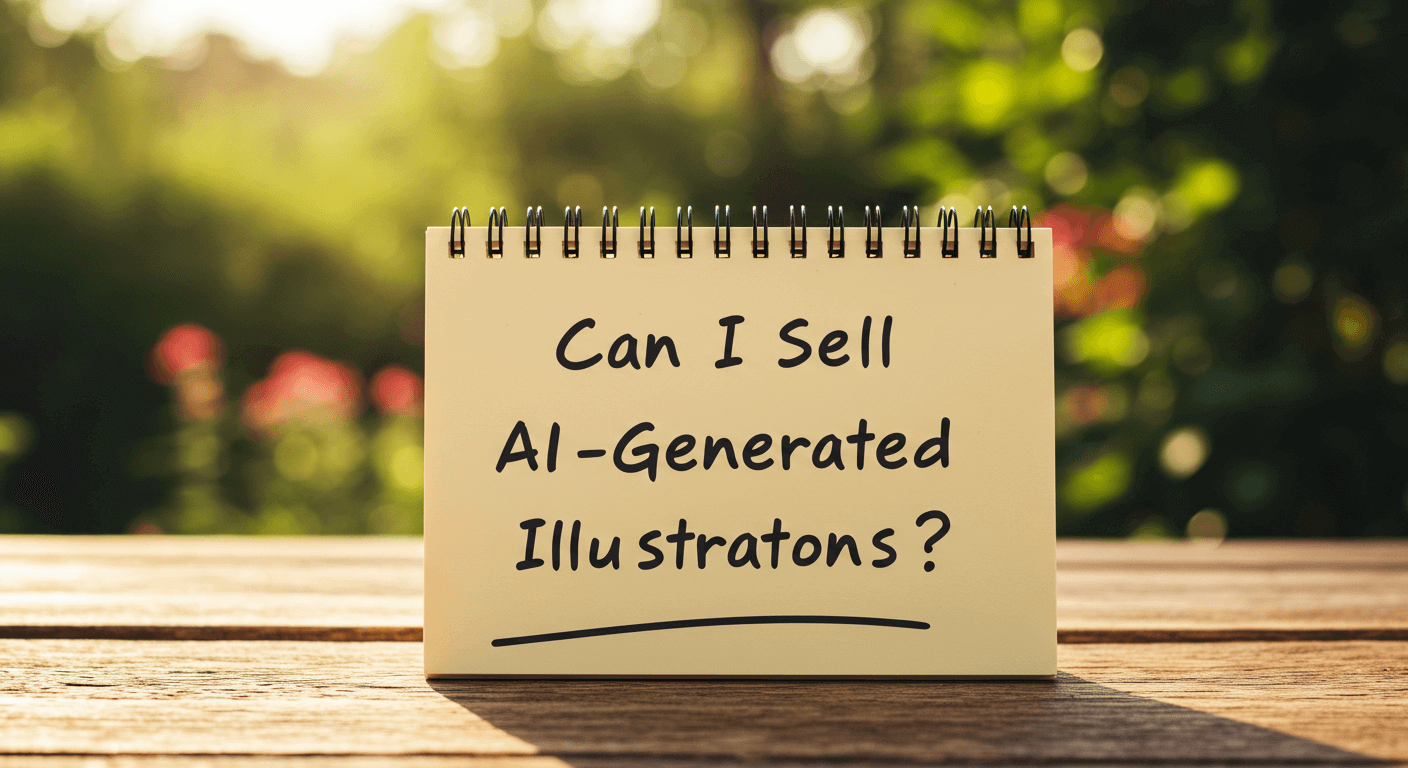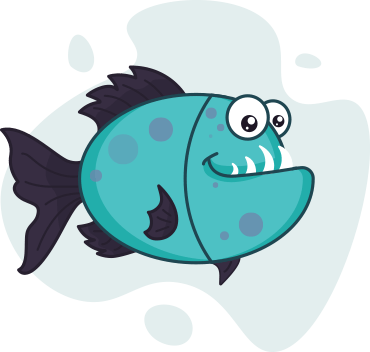Can I Sell AI-Generated Illustrations?
Illustrate Now
Table of Contents
ToggleIntroduction: Why This Matters Now
AI-generated illustrations are no longer just a tech curiosity—they’re fast becoming a cornerstone of digital creativity. Artists, custom illustration designers, and entrepreneurs alike are using tools like Midjourney, DALL·E, and Stable Diffusion to generate professional-grade visuals with nothing more than a text prompt.
But as these tools empower creators, a big question looms:
Can I sell AI-generated illustrations legally, ethically, and profitably?
As someone who’s worked with AI art tools since 2022—across editorial, digital commerce, and print—I’ve faced this question firsthand. In this guide, I’ll break down what I’ve learned: the legal framework, marketplace policies, ethical practices, and how to turn AI art into a legitimate business.
What Is an AI-Generated Illustration?
An AI-generated illustration is artwork created using artificial intelligence models trained on large datasets of images. These tools generate new visuals based on prompts provided by the user—e.g., “Futuristic mountain landscape at sunrise, cinematic, ultra-detailed.”
Popular AI tools include:
- Midjourney: Known for stylistic, painterly outputs.
- DALL·E (by OpenAI): Great for conceptual prompts and surreal imagery.
- Stable Diffusion: Offers open-source flexibility and local control.
But not all AI-generated artwork is created equal—especially in the eyes of copyright law or customers.
My Process: From Prompt to Sellable Art
Here’s a real-world breakdown of how I create AI-enhanced illustrations for digital posters and merchandise:
1. The Prompt
I use specific, layered prompts like:
“Cyberpunk city skyline at dusk, cinematic lighting, high detail, 8K render, neon color palette”
2. Image Generation
Midjourney gives me 4–8 unique versions. I select the strongest composition and upscale it.
3. Post-Processing
To make the work my own and meet copyright criteria, I:
- Refine lighting and texture in Photoshop
- Merge elements from different generations
- Correct perspective and color balance
- Add hand-drawn typography or overlays
This human involvement is crucial for both artistic value and potential copyright eligibility.
Can I Legally Sell AI-Generated Illustrations?
U.S. Copyright Law (As of 2025)
According to the U.S. Copyright Office, works created entirely by artificial intelligence without significant human authorship are not eligible for copyright protection.
That means:
- ✅ You can sell AI-generated art, but…
- ❌ You don’t own exclusive rights if you didn’t alter it meaningfully
You Can Copyright Modified Work
If you significantly transform the AI output—adding your own design decisions, hand-drawn layers, compositing, or artistic judgment—you may qualify for copyright protection.
📌 Tip: Keep evidence of your creative process (e.g., screenshots, video recordings, PSD files). It can be essential if your ownership is challenged.
What Do AI Art Platforms Allow?
Different tools have different rules. Here’s a breakdown:
| Platform | Commercial Use | Ownership Rights |
|---|---|---|
| Midjourney | Yes (paid users) | You own rights; Midjourney retains broad licensing rights |
| DALL·E (OpenAI) | Yes | You can sell and use images freely |
| Stable Diffusion | Yes (varies) | Allowed with open-source models; training data may raise issues |
🔎 Always review the platform’s Terms of Service before monetizing.
Where Can I Sell AI Art?
Here’s how major platforms handle AI-generated content:
Etsy
- ✅ AI art is allowed
- 📣 Disclosure required in listing
- 🏷️ Use tags like “AI-generated”, “digital art”, “AI-enhanced”
Adobe Stock
- ✅ Accepts AI-generated content
- ⚠️ Must label and confirm no IP infringement
Shutterstock
- ✅ Allows AI art (via OpenAI partnership)
- 🚫 Style-mimicking prompts may be restricted
Other Options
- Redbubble: AI art accepted with ethical guidelines
- Gumroad: No restrictions, but transparency is expected
- Your own store: No platform constraints, but requires your own audience and compliance with local laws
Monetization Models: Beyond Marketplaces
Selling JPEGs isn’t the only option. Here are other ways to turn your AI-enhanced illustrations into income:
🖼️ Print-on-Demand
Use platforms like Printful, Society6, or Displate to sell posters, t-shirts, and home decor without holding inventory.
📦 Digital Downloads
Offer wallpaper packs, coloring books, or printable art via Gumroad or Payhip.
🎨 Licensing & Commissions
License your edited AI art to brands or offer custom prompt design services.
Pricing Your AI-Enhanced Illustrations
Base Your Price On:
- Time spent editing
- Market competition
- Platform fees
- Print vs. digital distribution
💡 Tip: Don’t undervalue your creativity. A raw AI output might be worth $0—but your edited version, infused with intent and style, could fetch $20–$200+ depending on usage rights.
Ethical Selling: Should You Sell AI Art?
Just because you can doesn’t mean you always should. Consider these questions:
❌ Style Mimicry
Avoid prompts like:
“In the style of Hayao Miyazaki”
“Like Greg Rutkowski’s fantasy concept art”
These exploit real artists’ work without consent. Many platforms now ban this practice.
✅ Transparency Builds Trust
Be honest with buyers. Say:
“This artwork was created using AI tools and manually enhanced using Adobe Photoshop.”
Future of Copyright & AI Art
Copyright law is evolving rapidly. Globally:
- EU AI Act is regulating how AI-generated content is labeled and used
- U.S. courts have upheld that only humans can be listed as copyright authors
- More platforms are tightening content guidelines in response to legal pressure
🛡️ Best Practice: Assume your rights may be challenged and back up every sale with transparency, process evidence, and ethical practices.
Real Example: My Top-Selling AI Art Series
In late 2024, I launched a sci-fi poster collection titled “Neo Horizons.”
- Tools Used: Midjourney + Photoshop
- Process Time: ~2 hours per piece
- Revenue: Over $5,000 in 3 months via Etsy & Redbubble
- Biggest Lesson: Customers valued the behind-the-scenes videos more than the AI novelty
Social Proof: What Buyers Say
“I loved seeing the process of how this poster was created—AI + artist = awesome combo.”
— Sarah M., Etsy customer
“The color work and layout feel so intentional. Definitely not just a ‘robot image’!”
— Dan G., repeat buyer
FAQs
1. Is it legal to sell AI-generated art?
Yes. But you typically need to modify the AI image to hold copyright.
2. Can I copyright AI art?
Only if you add significant human creativity (editing, compositing, painting, etc.).
3. Do I need to disclose that it’s AI-generated?
Yes—on platforms like Etsy and Adobe Stock, disclosure is required.
4. Where can I sell AI-enhanced illustrations?
Try:
- Etsy
- Adobe Stock
- Gumroad
- Print-on-demand stores
- Your own eCommerce site
5. What’s the best tool for commercial AI art?
Midjourney and DALL·E are great for commercial use if you follow their licensing terms.
Final Thoughts: Yes, You Can Sell AI Art—If You Do It Right
AI tools offer endless creative possibilities, but they don’t replace the artist—you.
Selling AI-generated illustrations is absolutely possible, but it requires:
- Legal awareness
- Platform compliance
- Ethical integrity
- Personal creativity
So if you’re willing to put in the work—not just click “generate” but truly craft and curate—then yes, you can absolutely build a thriving business selling AI-generated illustrations.







